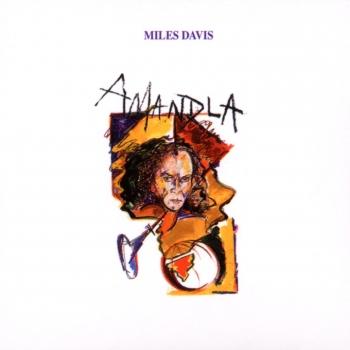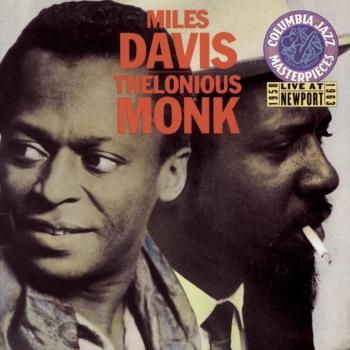
Tutu (Remastered) Miles Davis
Album info
Album-Release:
2011
HRA-Release:
08.06.2012
Album including Album cover
I`m sorry!
Dear HIGHRESAUDIO Visitor,
due to territorial constraints and also different releases dates in each country you currently can`t purchase this album. We are updating our release dates twice a week. So, please feel free to check from time-to-time, if the album is available for your country.
We suggest, that you bookmark the album and use our Short List function.
Thank you for your understanding and patience.
Yours sincerely, HIGHRESAUDIO
- 1 Tutu 05:18
- 2 Tomaas 05:40
- 3 Portia 06:22
- 4 Splatch 04:48
- 5 Backyard Ritual 04:52
- 6 Perfect Way 04:38
- 7 Don't Lose Your Mind 05:53
- 8 Full Nelson 05:12
Info for Tutu (Remastered)
1986’s Tutu marked a rebirth for Miles Davis. It was his first album after nearly 30 years as a Columbia Records recording artist, and appeared on the Warner Bros. label. Producer Marcus Miller was Davis’ chief foil, composing nearly every track and playing multiple instruments, while Jason Miles, George Duke, Paulinho da Costa and Michal Urbaniak all made appearances. Duke’s “Backyard Ritual” was covered on the album as well as pop group Scritti Politti’s “Perfect Way.” Tutu was very much a product of its time, emphasizing mid-1980s R&B textures and utilizing synthesizers, sequencers and drum machines. Although controversial at the time of its release, Tutu has been recognized of late as somewhat of a Davis classic.
Jazz’s most famous son is given godly status for his work in the 50s – as in Kind of Blue – and the 70s – as in Bitches Brew. The 80s remains a dubious period of his discography. Tutu casts doubt on that received wisdom. Although it is still dismissed by many as ‘lightweight’ or, worse still, ‘pop-fusion’, the album, whose striking monochrome sleeve stylized the trumpeter’s austere, sculptural, late-years beauty, had something that captured the imagination of many outside of the world of jazz.
And it wasn’t just the romance of Davis coming back to the fray, like some of the boxers from whom he drew inspiration, after several years on the ropes. If 1982’s We Want Miles was a clarion call for the idea that he was still relevant to music, specifically, and culture, generally, then 1986’s Tutu was proof positive that he could touch people without sounding dated. That was the whole point. The record reflected the 80s, just as Herbie’s Rockit did. That meant keyboards, sequencing, dub effects, drum machines and tonalities that often had the brightness and sharpness of the Fairlight era, something that is made all the more evident by the crisp sound of this re-issue.
Marcus Miller was the architect who built the sonic edifice for Davis, and the key thing was that he was a producer who could play as well as a player who could produce. Amid the tapestry of electronics, his bass guitar and bass clarinet make their presence felt, as does Michael Urbaniak’s electric violin, Paulinho Da Costa’s percussion, and Adam Holzman and Jason Miles’ synths. These elements cohere in backdrops that had strong echoes of black popular music of the day – Cameo’s sparkling, day-glow funk, Prince or Jam & Lewis’ fizzing electro-acoustic cocktails and, to a lesser degree, the angsty soul-reggae that Wally Badarou and Sly & Robbie laid down for Grace Jones. But Miller brought more crystalline harmonic subtleties to the table. Combined with Davis’ brooding brass whispers, the result was a work of engrossingly fraught atmospheres. And great tunes. None are light. Some are positively heavy. (Kevin Le Gendre, BBC)
Miles Davis, trumpet
Marcus Miller, bass
George Duke, keyboards
Jason Miles, synthesizer
Jabali Billy Hart, drums
Paulinho de Costa, percussion
Produced by Tommy Lipuma, Marcus Miller
Engineered at Capitol Records and at Clinton Recording.
Except 'Backyard Ritual' Engineered at Le Gonks
'Tutu,' 'Portia' and 'Splatch' Mixed at Ocean Way
'Tomaas,' 'Perfect Way,' 'Don't Lose Your Mind' and 'Full Nelson' Mixed at Atlantic Studios
'Backyard Ritual' Mixed at Ocean Way
Originally Mastered at Mastering Lab
Digitally remastered in 2011
Trumpeter Miles Davis grew up in East St. Louis, Illinois, just across the river from St. Louis, Missouri. His parents were affluent, and had the means to support his musical studies as a boy. He began playing the cornet at age nine, and received his first trumpet at around twelve or thirteen. He studied classical technique, and focused mainly on using a rich, clear tone, something that helped define his sound in later years.
As a teenager, he played in various bands in St. Louis, which was rich with jazz, as big bands often stopped there on tours throughout the Midwest and southern states. The most important experience he had was when he was asked to play in the Billy Eckstine band for a week as a substitute. The group included Charlie Parker, Dizzy Gillespie, and Sara Vaughan. After playing with these stars, Davis knew he had to move to New York to be at the heart of the jazz scene.
In Pursuit of Parker:
In 1944 Davis moved to New York City where he had earned a scholarship to study trumpet at the Juilliard School of Music. Upon arriving however, he sought after Charlie Parker, and meanwhile spent all of his time in jazz clubs listening to bebop. He was transfixed on the music, and grew utterly bored with his classical studies. After less than a year at Juilliard, he dropped out and tried his hand at performing jazz.
Although not particularly stunning, his playing was good enough to finally attract Charlie Parker, and Davis joined his quintet in 1945. He was often criticized for sounding inexperienced, and was compared unfavorably to Dizzy Gillespie and Fats Navarro, who were the leading trumpeters at the time. Both boasted stellar technique and range, neither of which Davis possessed. In spite of this, he made a lasting impression on those who heard him, and his career was soon set aloft.
Cool Jazz and a Rise to Fame:
Encouraged by composer and arranger Gil Evans, Davis formed a group in 1949 that consisted of nine musicians, including Lee Konitz and Gerry Mulligan. The group was larger than most bebop ensembles, and featured more detailed arrangements. The music was characterized by a more subdued mood than earlier styles, and came to be known as cool jazz. In 1949 Davis released the album Birth of the Cool (Captiol Records).
Change of artistic direction became central to Davis’ long and increasingly influential career. After dabbling in hard bop as a leader on four Prestige recordings featuring John Coltrane, he signed with Columbia records and made albums that featured Gil Evans’ arrangements for 19-piece orchestra. These were Miles Ahead, Porgy and Bess, Sketches of Spain, and Quiet Nights. He rose in popularity with these recordings, in part due to his signature sound, which he often enhanced by using a Harmon mute.
Kind of Blue and Beyond:
In 1959 Davis made his pivotal recording, Kind of Blue. It was a departure from all of his previous projects, abandoning complicated melodies for tunes that were sometimes only composed of two chords. This style became known as modal jazz, and it allows the soloist expressive freedom since he does not have to negotiate complex harmonies. Kind of Blue also featured John Coltrane, Cannonball Adderley, and Bill Evans. The album is one of the most influential in jazz, and is Columbia Records’ best-selling jazz record of all time.
In the mid 1960s Davis changed directions again, forming a group with Herbie Hancock, Wayne Shorter, Tony Williams, and Ron Carter. This group was known for the excellence of each individual member, and also for its unique performance approach. Each night the tunes would sound different, as the musicians would sometimes only loosely adhere to the song structures, and often transition from one right into the next. Each player was given the chance to develop his solos extensively. Like all of Davis’ previous groups, this quintet was highly influential.
Late Career:
Despite health problems, drug addiction, and strained personal relationships, Davis continued to play, changing his approach with each new project. In the late 60s and 70s, he began to experiment with electronic instruments, and grooves that were tinged with rock and funk music. Two famous recordings from this period are In a Silent Way and Bitches Brew. By the time the 1980s rolled around, Davis was not only a jazz legacy, but a pop icon, whose music, persona, and fashion style were legendary.
Davis died in 1991, as perhaps the most influential jazz artist ever. His vast body of work continues to be a source of inspiration for today’s musicians. (Jacob Teichroew, About.com Guide)
This album contains no booklet.






































